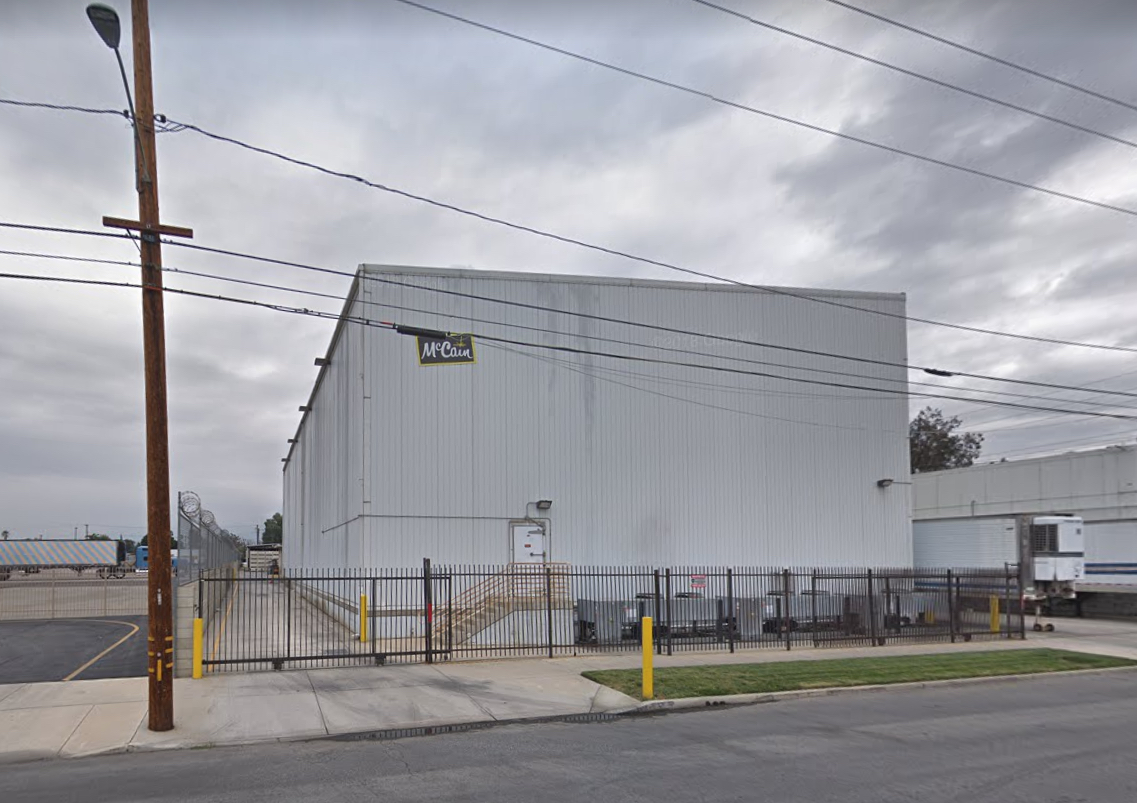UPDATE 5:38 p.m. EST, August 9: Justice Gorsuch has granted a temporary recall of the mandate from the U.S. Court of Appeals for the Eighth Circuit that USDA release SNAP retailer sales data. Both sides have the chance to respond, and then he will decide whether or not to grant a motion barring the release of the data—pending a decision from the Supreme Court about whether to take up the case.
Most of the time, the government tells the public which companies benefit from federal dollars earmarked for taxpayer-funded public assistance programs.
We know which insurance companies make the highest profits from Medicare and Medicaid, for example, and those figures have been used to pressure them to offer better options to their clients.
We know which developers get tax breaks for providing affordable housing, and they’ve been named and shamed in the press for requiring low-income tenants to enter through “poor doors.”
It might be fair, then, to assume that the government discloses how much money grocery stores earn from the Supplemental Nutrition Assistance Program (SNAP, formerly known as food stamps). It is, after all, one of the country’s largest taxpayer-funded public assistance programs, averaging about $70 billion a year in benefits distributed via debit-style cards. SNAP beneficiaries can use their cards just about anywhere, but large retail corporations in particular have been wildly successful in attracting shoppers who pay with food stamps. The United States Department of Agriculture (USDA), which administers the program, reported in 2016 that 81 percent of SNAP dollars are spent at superstores like Kroger and Target.
Journalists, city officials, and public health advocates have been trying to learn more about retailers’ SNAP earnings for years. The most recent chapter starts in late 2010, when reporters at South Dakota’s Argus Leader newspaper sent a Freedom of Information Act (FOIA) request to USDA asking for a list of participating retailers and their total SNAP sales.
The agency denied the Leader’s request for a number of reasons I’ll detail below. And in response, the Sioux Falls-based daily appealed. Then it sued. What followed was a seven-year saga that encompassed years of agency stonewalling, several trips to court, and more than one 11th-hour plot twist. The defendants this week escalated the case as far as the Supreme Court, their last chance to keep the data secret using the judicial system. But the House of Representatives has already voted on a version of the farm bill that would keep it out of the public eye forever.
 JetCityImage
JetCityImage Since 2010, USDA and South Dakota’s Argus Leader newspaper have been in a prolonged battle over data about retailer revenue from SNAP. That information may soon be permanently sealed by a provision in the House of Representatives’s version of this year’s farm bill
It all started with food deserts. Argus Leader reporters Jonathan Ellis and Megan Luther were reporting on SNAP benefits in South Dakota when they started to wonder where people actually bought their groceries. “We wanted to look at the growth of, basically, gas stations—not your typical grocery stores—becoming food-stamp eligible, where many South Dakotans were getting their food because there were no grocery stores nearby,” Luther says.
They submitted a number of FOIA requests, including the one that asked USDA to disclose how much money retailers were collecting from the SNAP program. When USDA responded to their request, it cited an exemption that typically applies only to information that’s explicitly prohibited from disclosure by Congress—think sensitive national security information or public officials’ tax returns.
“I went and looked up the law and I read it and I’m like, that’s bullshit,” Ellis says.
Ellis says USDA told the Leader it would have to spend hundreds of thousands of dollars to send postcards to all the retailers that would be affected by the disclosure of SNAP sales data. But in August of 2014, the agency notified 321,000 participating retailers via email and automated phone call. “They totally lied to us in the first place about how they were going to have to spend all this money,” Ellis says.
At the same time it notified retailers of the potential release, USDA also solicited comments from grocers about whether or not such a disclosure would threaten their businesses. Just 235 of those retailers—less than one-tenth of one percent—responded to say they opposed the release of their SNAP sales data. Their comments formed the basis of the agency’s defense when the case advanced to trial.
 Fabio Bracht
Fabio Bracht Of the nation’s grocery retailers, less than one-tenth of one percent have expressed opposition to USDA releasing their SNAP sales data
At the core of USDA’s argument was its assertion that releasing retailer information would cause competitive harm to the companies that make money off of food stamps. If the agency could successfully prove competitive harm, it could withhold the data based on FOIA exemption number four.
Ricky Volpe, an agricultural economist at California Polytechnic State University who served as an expert witness for the Argus Leader, says it’s not clear how, exactly, retailers would use SNAP retailer data to gain a competitive edge. He says there’s no way to know whether high food-stamp sales would attract or repel a retailer from siting a store in a given neighborhood. On the one hand, high SNAP sales may indicate lots of shoppers with reliable money to spend on food. On the other, high SNAP sales may also indicate a high concentration of shoppers without much extra money to spend at the grocery store.
The Food Marketing Institute (FMI), a trade association that represents retailers and wholesalers, intervened on behalf of USDA after the agency lost in court (more on that later). It has argued that grocery stores operate on razor-thin profit margins and disclosing sales data would further endanger their bottom lines. “Protecting the confidential store-level sales data of grocery stores is an important investment in defending the jobs grocery stores provide and the communities they nurture,” chief public policy officer Jennifer Hatcher said in an emailed statement.
Though the Argus Leader has argued it shouldn’t be required to divulge its intentions in pursuing retailer sales data—open records are open records, regardless of how reporters want to use them—it’s not difficult to imagine how researchers, policymakers, and other journalists might use the information.
In May, for example, I reported on a study showing that retailers amp up soda promotions on days customers receive their SNAP benefits. If retailer sales data were public, the researchers from that study could’ve cross-referenced soda marketing tactics with total SNAP profit to assess the efficacy of these types of promotions. The results of such research might prompt public health advocates to pressure big-box stores to hold off on marketing Coke and Pepsi until later in the benefit cycle. Policymakers might use SNAP sales figures to drum up incentives or tax breaks that help keep fresh-food purveyors in business. And as online marketplaces like Amazon start accepting food stamps, journalists like me will certainly be interested in mapping the contours of the program’s transition online.
 Bernard Hermant
Bernard Hermant If you thought that after eight years and two court rulings siding with the Argus Leader this lawsuit would have run its course, you thought wrong
In May of 2016, the District Court heard both sides’ arguments in a bench trial, a rarity in FOIA lawsuits, which are usually decided based on written briefs. The court ruled in favor of the Leader.
The whole ordeal almost ended there. By early 2017, USDA had decided not to challenge the ruling. The agency “had [the data] on a disk and Jonathan [Ellis] was going to go pick it up,” says Arneson. “We’re talking a matter of hours.”
But within a day or two, FMI stepped in and requested to defend the lawsuit in place of USDA. It claimed the agency had adequately proved the release of information would harm stores that accept SNAP. Arneson says this appeals process took nearly a year to run its course.
A three-judge panel at the Eighth Circuit Court of Appeals sided again with the Leader in May of this year. (The New Food Economy submitted a FOIA request for SNAP retailer sales data for years not covered by the Leader’s request at that time.) It appeared that the lawsuit had nearly run its course.
Here’s another Hail Mary: The House of Representatives has passed a farm bill that explicitly protects transaction data from disclosure. Lawmakers from the Senate and the House of Representatives will meet after Labor Day to reconcile their two versions of the bill. The current legislation expires at the end of September.
How did that last-minute provision make it into the bill? It’s clearly related to the Leader lawsuit: the House of Representatives makes explicit mention of the case on its “Farm Bill Q & A” page.
No matter how it got there, Ellis points out in an op-ed for USA Today that the provision directly benefits FMI. What appears lost in the courts may be won in the legislature. “As is typical with these types of special-interest favors, they don’t have fingerprints,” Ellis writes. “They show up—poof—like magic.” And in this case, they might erase seven years of litigation by a small newspaper in Sioux Falls, South Dakota.










